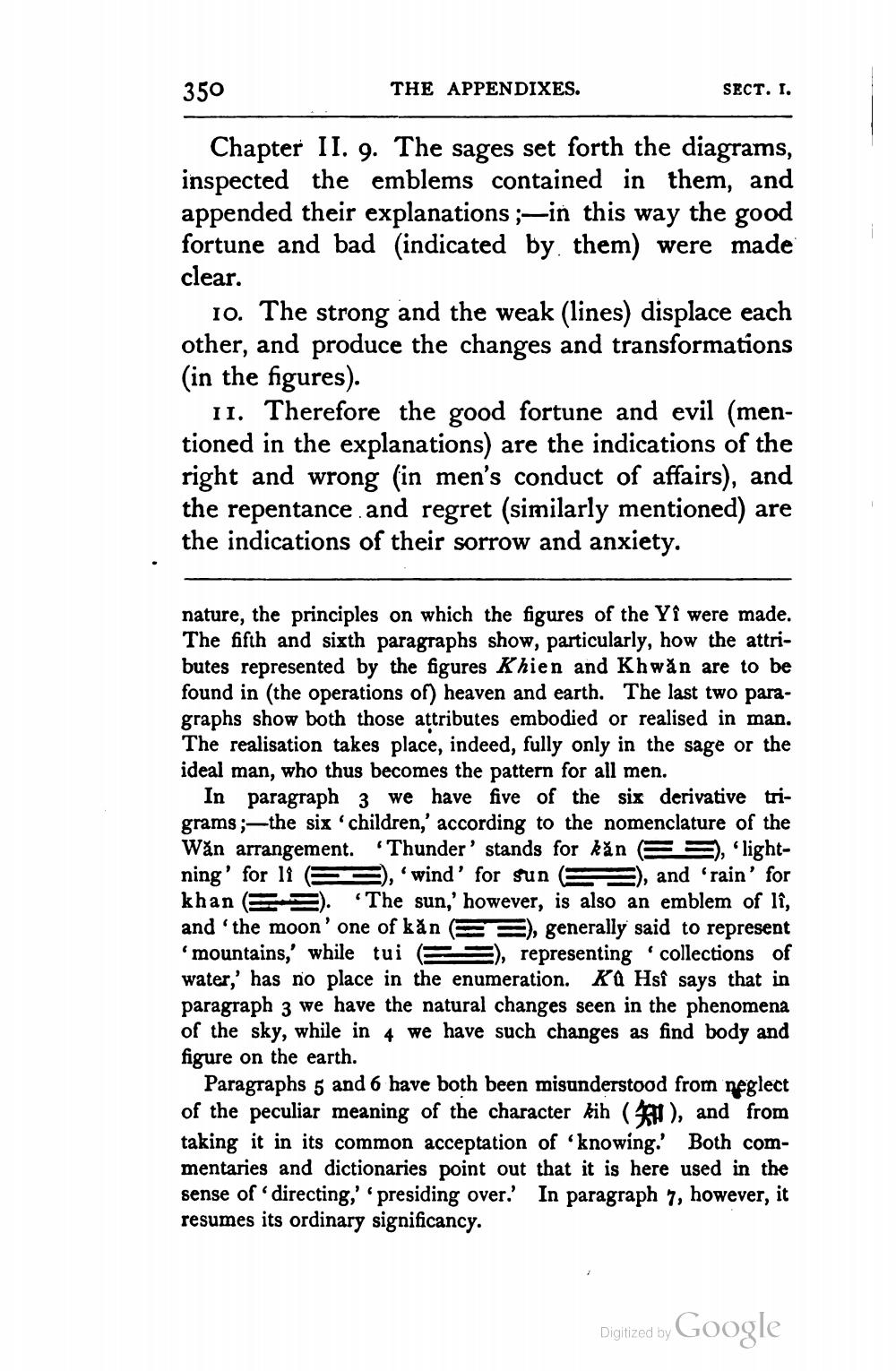________________
350
THE APPENDIXES.
SECT. I.
Chapter II. 9. The sages set forth the diagrams, inspected the emblems contained in them, and appended their explanations ;-in this way the good fortune and bad indicated by them) were made clear.
10. The strong and the weak (lines) displace each other, and produce the changes and transformations (in the figures).
11. Therefore the good fortune and evil (mentioned in the explanations) are the indications of the right and wrong (in men's conduct of affairs), and the repentance and regret (similarly mentioned) are the indications of their sorrow and anxiety.
nature, the principles on which the figures of the Yi were made. The fifth and sixth paragraphs show, particularly, how the attributes represented by the figures Khien and Khwan are to be found in the operations of heaven and earth. The last two paragraphs show both those attributes embodied or realised in man. The realisation takes place, indeed, fully only in the sage or the ideal man, who thus becomes the pattern for all men.
In paragraph 3 we have five of the six derivative trigrams;—the six children,' according to the nomenclature of the Wăn arrangement. Thunder' stands for kan E ), lightning' for 11 E 3 ), wind' for sun (5 ), and 'rain' for khan (
E E ). "The sun,' however, is also an emblem of li, and 'the moon' one of kan =), generally said to represent
mountains, while tui E ), representing collections of water,' has no place in the enumeration. KQ Hsi says that in paragraph 3 we have the natural changes seen in the phenomena of the sky, while in 4 we have such changes as find body and figure on the earth.
Paragraphs 5 and 6 have both been misunderstood from neglect of the peculiar meaning of the character kih( ), and from taking it in its common acceptation of knowing. Both commentaries and dictionaries point out that it is here used in the sense of directing,' presiding over. In paragraph 7, however, it resumes its ordinary significancy.
Diglized by Google




